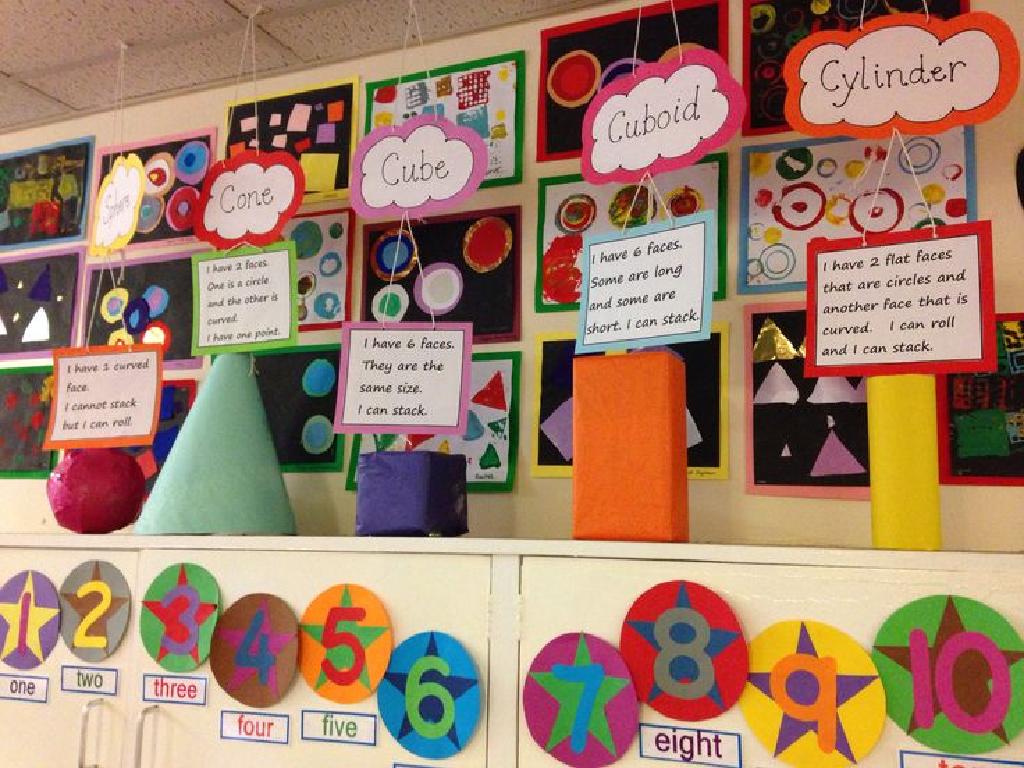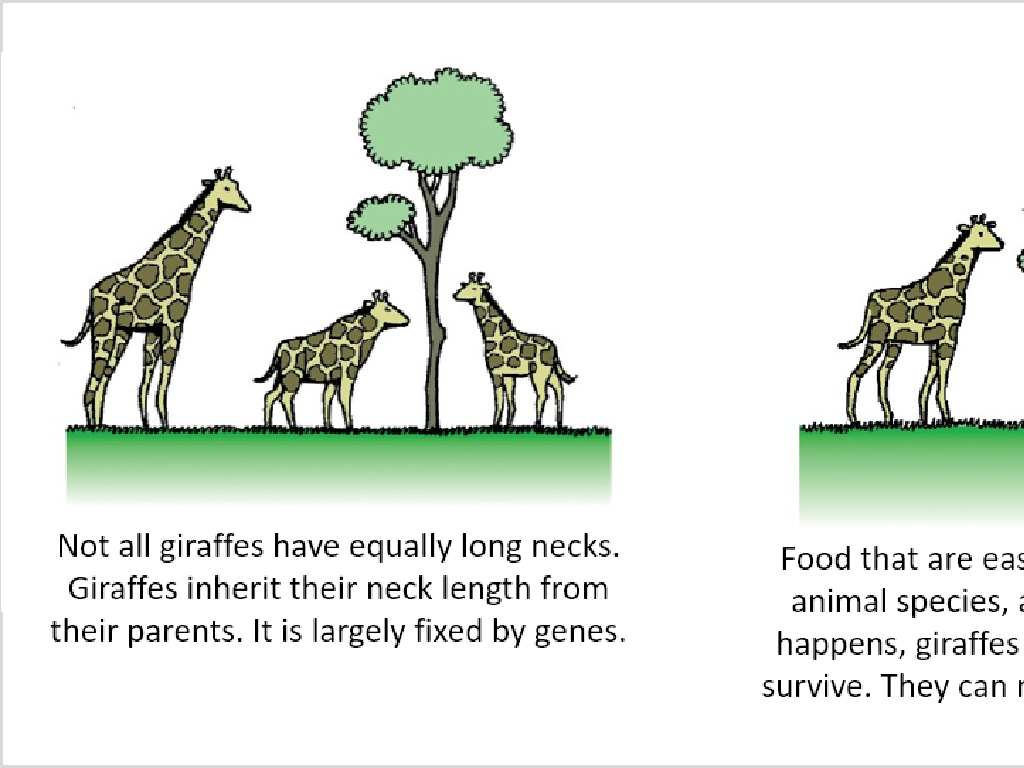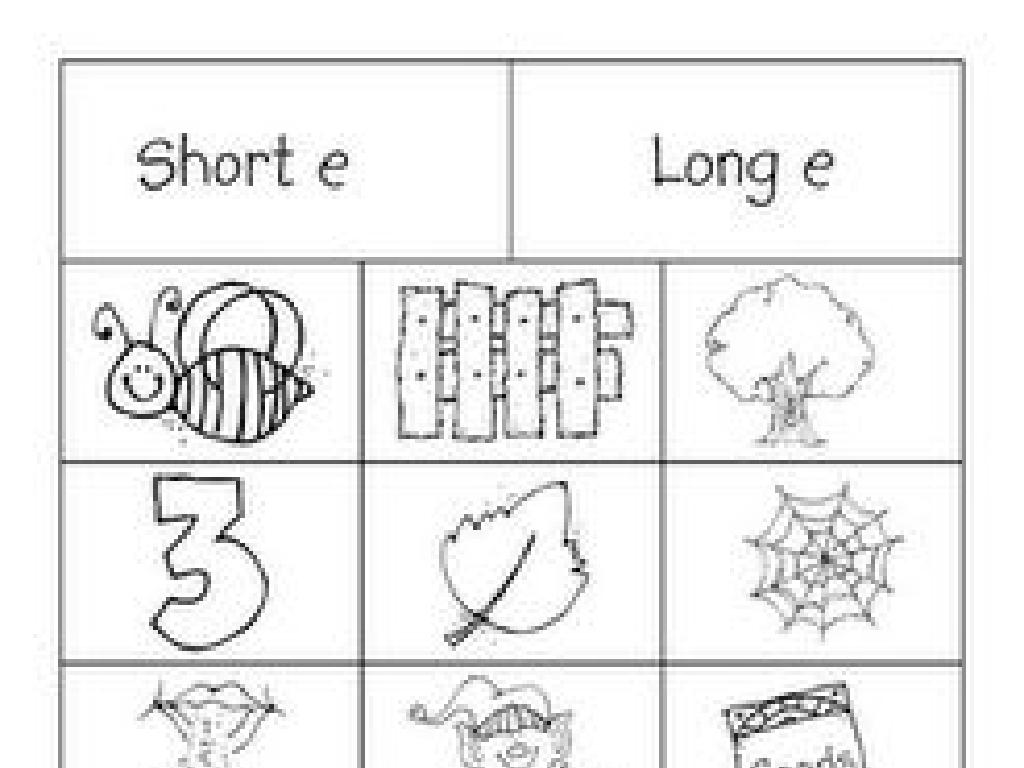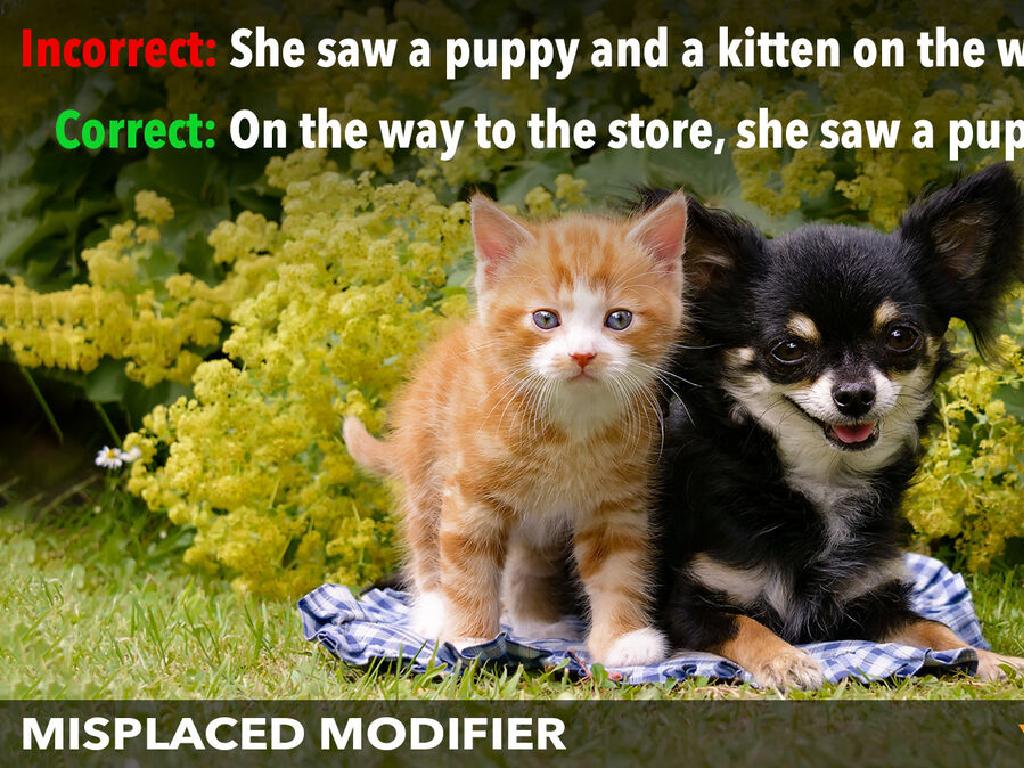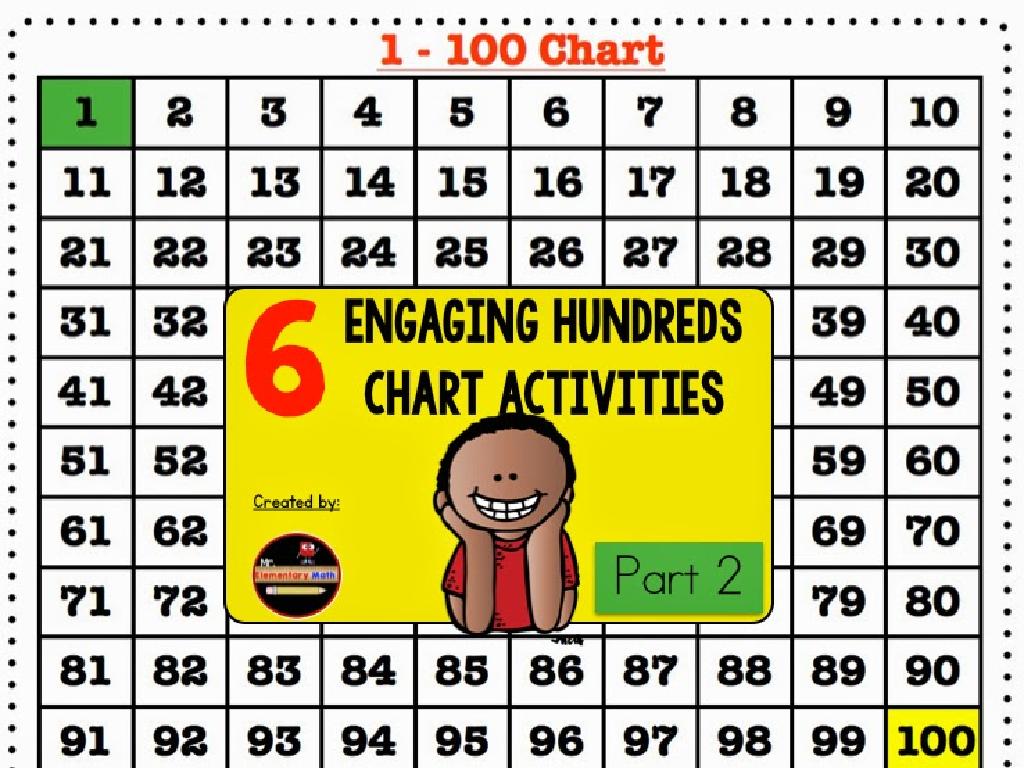Equal Parts
Subject: Math
Grade: Kindergarten
Topic: Fractions Of Shapes
Please LOG IN to download the presentation. Access is available to registered users only.
View More Content
Welcome to Fractions: Learning About Equal Parts
– Greetings, young math explorers!
– Today’s adventure: Equal Parts
– Equal parts mean all parts are the same size
– Sharing fairly is important
– Like splitting a cookie so everyone gets the same amount
– Equal parts make things even
|
This slide introduces kindergarteners to the concept of fractions by exploring equal parts. Start by greeting the students warmly and explaining that today’s lesson will be about understanding how to divide things equally. Emphasize the importance of fair sharing, using relatable examples such as dividing a snack among friends. Explain that when we talk about equal parts in math, we mean that each part is the same size. Use visual aids like cut-out shapes or real objects to demonstrate how to split items into equal parts. Encourage the children to think of times they have shared something equally with others. The goal is to make the concept of equal parts tangible and understandable for young learners.
Understanding Fractions: Pizza Slices
– Fractions are parts of a whole
– Like sharing a toy, fractions divide things into equal parts
– Imagine a pizza cut into pieces
– If you cut a pizza into 4 pieces, each piece is 1/4 of the pizza
– Each piece is a fraction of the pizza
– Eating one piece means you’ve had a fraction of the whole pizza
|
This slide introduces the concept of fractions to Kindergarten students by relating it to a familiar and enjoyable experience: eating pizza. Begin by explaining that a fraction represents a part of something that is whole. Use the example of a pizza being cut into equal-sized pieces, where each piece represents a fraction of the entire pizza. This visual and tangible example helps young learners grasp the concept of fractions as parts of a whole. Encourage the students to think of other examples of fractions in their daily lives, such as sharing snacks or dividing playtime activities. The goal is to make fractions relatable and understandable at a foundational level.
Understanding Equal Parts
– Equal parts are the same size
– Example: A sandwich cut into 2
– Imagine cutting a sandwich in half so each friend gets the same amount
– Both pieces are the same size
– It’s like sharing toys fairly with a friend
– Unequal parts are different sizes
|
This slide introduces the concept of equal parts, which is a foundational idea in understanding fractions. Emphasize that ‘equal’ means ‘the same size.’ Use tangible examples like cutting a sandwich, which they might do during lunch. This makes the concept relatable and easier to grasp. Explain that unequal parts are different in size, like if one friend gets a bigger piece of a snack than the other. During the presentation, you can use real objects to demonstrate this concept or draw pictures to visually represent equal and unequal parts. Encourage the children to think of times they have shared something equally or unequally to connect the idea to their experiences.
Finding Equal Parts of Shapes
– Look at shapes cut into parts
– Use eyes to check equal sizes
– Are the parts the same as each other?
– Find shapes with equal parts
– Shapes like rectangles or circles cut into pieces
– Understanding equal parts
– Equal parts are the same size and shape
|
This slide introduces the concept of equal parts in shapes, which is a foundational idea in understanding fractions. Encourage the students to observe different shapes such as rectangles, circles, and squares that are divided into parts. Ask them to visually inspect if these parts are of the same size. Use simple, everyday examples like cutting a sandwich or a pizza to illustrate the concept. The goal is for students to recognize that equal parts mean they are the same size and shape. During the class, you can have cut-outs of various shapes and ask students to group them based on whether they are divided into equal parts or not. This will help them apply the concept of equal parts in a tangible way.
Shapes and Equal Parts
– Shapes show fractions
– Cutting shapes into equal parts
– Like a pizza cut into slices
– Each part is a fraction
– If a pizza has 4 slices, each slice is 1/4 of the pizza
– Let’s make equal parts!
|
This slide introduces the concept of fractions using familiar shapes such as circles, squares, and rectangles. Explain that when we cut these shapes into smaller parts of the same size, we are creating fractions. Use tangible examples like cutting a pizza or a sandwich into equal parts to illustrate the idea that each part represents a fraction of the whole. Encourage the children to think about dividing shapes into equal parts and discuss how many parts they can make. This will set the foundation for understanding that fractions are parts of a whole and prepare them for hands-on activities where they can practice dividing shapes into equal parts themselves.
Class Activity: Making Equal Parts
– It’s your turn to make equal parts
– We’ll cut shapes out of paper
– Use scissors to divide paper shapes
– Each part must be the same size
– Check if all parts are equal by overlaying
– Have fun comparing the pieces!
|
This activity is designed to give students a hands-on experience with the concept of equal parts, which is a foundational idea in understanding fractions. Provide each student with various paper shapes such as circles, squares, and rectangles. Demonstrate how to fold and cut these shapes into equal parts. Encourage the students to make sure that each part is the same size by comparing the pieces with each other. Possible variations of the activity could include using different colored paper to help visualize the parts, or having students trade shapes with each other to compare their work. This will help them understand that ‘equal parts’ means all parts must be of identical size. The activity will also enhance their fine motor skills through cutting and folding.
Sharing Equally with Fractions
– What does sharing equally mean?
– It’s like dividing things into equal parts.
– Sharing 4 apples with 2 friends
– How can we divide the apples so it’s fair?
– Cutting apples into equal parts
– We make 2 equal parts from each apple.
– Each friend gets an equal share
– Everyone should get the same amount.
|
This slide introduces the concept of equal sharing as a foundation for understanding fractions. Start by explaining that sharing equally means everyone gets the same amount. Use a relatable example, such as sharing apples between friends, to illustrate the concept. Demonstrate how cutting each apple into two equal parts ensures each friend gets an equal share. Emphasize the fairness of equal sharing. For the activity, you can bring in play food that can be ‘cut’ or use paper cut-outs to simulate sharing equally. Encourage the students to think about other situations where they share equally, like splitting a snack or sharing toys during playtime.
Review Time: Understanding Equal Parts
– What are equal parts?
– Parts that are the same size
– Importance of equal parts
– Helps us share fairly
– Identifying equal parts
– Show and tell equal parts
– Bring your favorite shape cut into equal parts
|
This slide is a review of the concept of equal parts, which is fundamental in understanding fractions. Start by asking the students what they remember about equal parts to assess their recall. Explain that equal parts are important because they help us divide things like food or toys equally, ensuring fairness. Then, interact with the students by asking them to identify equal parts in various shapes. For a hands-on activity, encourage students to bring in a cut-out of their favorite shape divided into equal parts, which they can show to the class. This will help them visualize and reinforce the concept of equal parts in a tangible and engaging way.
Let’s Play a Game: Find the Equal Parts
– Understand ‘equal parts’
– Parts of a shape that are the same size
– Observing shapes closely
– Look at different shapes I show you
– Decide if parts are equal
– Say ‘yes’ if parts are the same, ‘no’ if not
– Ready, set, go!
|
This interactive game is designed to introduce Kindergarten students to the concept of equal parts as a foundation for understanding fractions. Start by explaining that equal parts are sections of a shape that are the same size. Use simple shapes like circles, squares, and rectangles, divided into parts. Show these shapes one by one and ask the students to observe and decide if the parts are equal or not. Encourage them to explain why they think the parts are equal or not, fostering critical thinking and observation skills. This activity will help them visually and conceptually grasp the idea of equal parts, an essential skill for future math lessons on fractions.
Conclusion: Equal Parts Fun!
– Great job learning today!
– Equal parts are the same size.
– Like two halves of a sandwich.
– See you for more math fun!
– Keep practicing at home!
– Try cutting fruit into equal pieces.
|
Today’s lesson on equal parts is fundamental for understanding fractions. Reinforce the concept that equal parts must be the same size, which is crucial for fair sharing and understanding the basics of fractions. Encourage the children to practice this concept at home, perhaps with the help of their parents, by cutting objects into equal parts, like sandwiches or fruits. This will help solidify their understanding through practical application. Look forward to seeing the students’ progress in the next class and continue to build on these foundational math skills.

